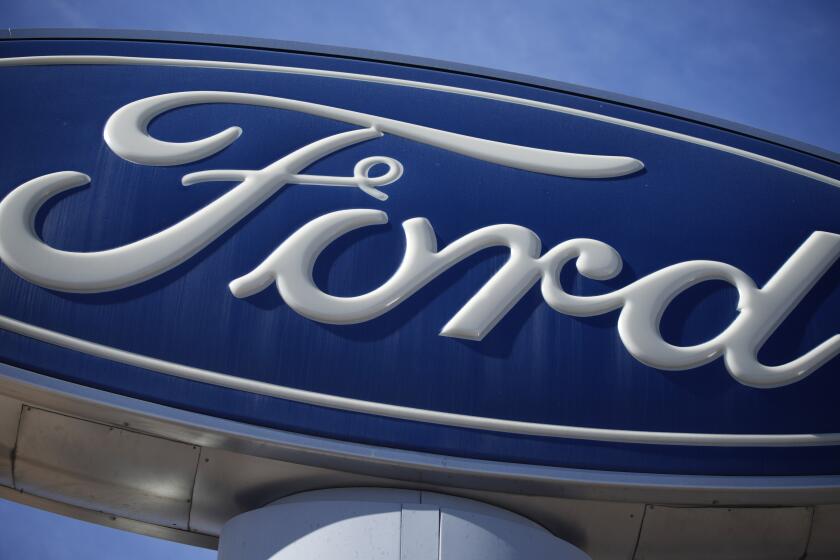Amazon’s Sales Short of Forecast
Amazon.com, the Internet retailer that once dreamed of selling everything to everybody, said Monday that second-quarter sales were lower than even the pessimists had expected. Analysts had forecast about $678 million in quarterly sales, but the company came in $10 million shy of that figure.
The shortfall wasn’t a one-time thing, either. The Seattle company cut its sales estimates for the second half of the year by as much as $150 million. Nine months ago, Amazon was supposed to achieve $5 billion in revenue this year, then it projected $3.4 billion in sales. Now it’s hoping for $3.2 billion.
Once-bullish analysts were disappointed and mystified. “Either their revenue guidance is overly conservative, or there’s something wrong we don’t know about,” said Shawn Milne of Wit SoundView.
Separately, Amazon announced Monday an expanded alliance with America Online Inc., to take effect in late 2002. AOL also invested $100 million in Amazon, buttressing the retailer’s semi-precarious cash position.
Neither of the AOL announcements impressed traders. Amazon’s stock fell sharply to $14.82 in after-hours trading. The earnings report was released after the market closed. Amazon’s shares closed Monday at $16.03, down 95 cents on Nasdaq.
In conference calls with analysts and reporters, Amazon officials stressed how much their bottom line is improving. Gross profit, for instance, increased 32% to $180 million in the quarter. And pro forma net loss fell to $58 million, or 16 cents a share, from $116 million, or 33 cents a share, in the second quarter of last year. Analysts had expected a loss of 22 cents a share in the latest quarter.
Pro forma results exclude things such as interest payments. But even on the harder-edged net loss accounting, Amazon reduced its second-quarter net loss to $168 million from $317 million last year.
“This is all Economics 101,” said Eric Von der Porten, a money manager who’s been a frequent Amazon critic. “If you price something very inexpensively, you’ll sell a lot of it. If you raise your prices, you won’t sell as much.”
Amazon’s second-quarter sales were $667.6 million, up from $577.9 million a year earlier. But the latest sales figures also marked a slide from $700 million in sales in this year’s first quarter.
And Amazon’s second-quarter sales in its core U.S. books, music and video category grew only 1% from last year. The company plans to cut prices.
“There are two kinds of retailers: those who work to figure out how to charge more and those who figure out how to charge less,” Chief Executive Jeff Bezos said. “We’re going to be the second.”
But while that may drive up revenue, it easily could come at the price of improving profit margins. “If down the road they want to reverse that strategy and raise margins again, will consumers put up with it?” asked Wit SoundView’s Milne.
As for the AOL deal, Amazon will be paid an undisclosed amount to promote AOL as its preferred Internet service provider. Meanwhile, Amazon features--such as the “wish list” that people use to describe presents they want to get--will become part of the AOL shopping channel.
Faye Landes, an analyst with Sanford Bernstein, dismissed the AOL deal, saying it was only “a small part of the story. This is a company with decelerating revenue, and they’re like, ‘Don’t worry about it, don’t worry about it.’ ”
Analysts remain concerned about Amazon’s shrinking cash position. The company had stressed that it would end the year with $900 million, a healthy sum even if that would dwindle when it started paying its holiday bills early in 2002. On Monday, the company still said that its cash would be $900 million at year’s end, but that this total included the $100-million infusion from AOL.
The AOL money “is in the bank,” Amazon Chief Financial Officer Warren Jenson said. Asked whether Amazon wanted the investment because it was worried about running out of money, he replied, “Absolutely not.”
Retailers are usually measured by their working capital, which is current assets minus current liabilities. Essentially, working capital is the cash available to fund operations.
Because Amazon is losing money, its working capital keeps falling. The company ended the second quarter with $161 million, down from $251 million in the first quarter.
More to Read
Inside the business of entertainment
The Wide Shot brings you news, analysis and insights on everything from streaming wars to production — and what it all means for the future.
You may occasionally receive promotional content from the Los Angeles Times.








